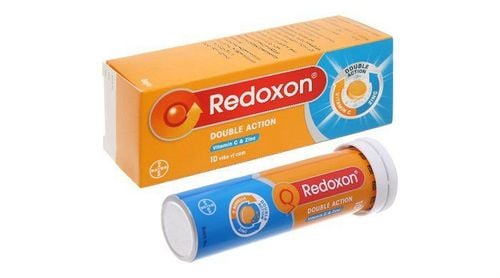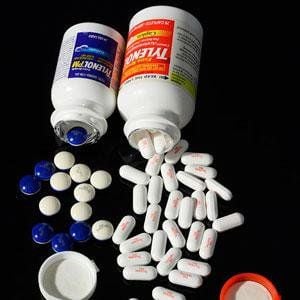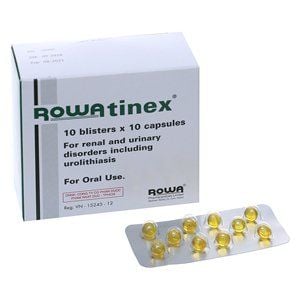Laroscorbine 1g/5ml contains the main ingredient: ascorbic acid. The drug is indicated for the prevention and treatment of vitamin C deficiency (scurvy), bleeding diseases, and other diseases that require vitamin C supplementation, enhancing the body's defenses.
1. What is Laroscorbine 1g?
Laroscorbine solution is used for intravenous infusion to prevent vitamin C deficiency when oral medication cannot be given, treat rickets and fever caused by vitamin C deficiency, and help the body fight infections and colds. At the same time, the drug increases the body's defenses to diseases when poisoned and infected.
Laroscorbine contains the main ingredient: ascorbic acid. The drug belongs to the group of water-soluble vitamins, which can be prepared in many forms.
Ascorbic acid (vitamin C) is found naturally in citrus fruits, tomatoes, potatoes and leafy vegetables. Vitamin C is important for bones, connective tissue, muscles, and blood vessels. Vitamin C also helps the body absorb iron, which is needed to produce red blood cells. Laroscorbine is well absorbed from the gastrointestinal tract. Ascorbic acid is widely distributed in all tissues. The body's ascorbic acid stores are usually about 1.5 g. The concentration of leukocytes and platelets is higher than that of red blood cells and plasma. Ascorbic acid for the body’s needis rapidly eliminated, generally exceeding 200 mg per day. Unmetabolized ascorbic acid and its inactive metabolites are excreted mainly in the urine. The amount of ascorbic acid excreted unchanged in the urine is dose-dependent and may be accompanied by mild diuresis.
2. Uses of Laroscorbine 1g and Laroscorbine 1g/5ml
Ascorbic acid plays a vital role in the development of cartilage and bones and helps heal wounds because it forms collagen and intercellular substances. This substance is a catalyst for converting folic acid into folinic acid, allowing the body to absorb iron from the digestive tract easily. Laroscorbine also affects the formation of Hemoglobin and the development of red blood cells. Ascorbic acid is necessary for the metabolism of Protid, Lipid, and Glucid, contributing to synthesizing substances in the body such as catecholamine and adrenal cortex hormones. Vitamin C combines with Vitamin A and Vitamin E in anti-oxidation by neutralizing free radicals generated from metabolic reactions in the body. Therefore, the cell membrane is protected intact. In particular, it prevents free radicals from attacking cells, enhancing the body's defenses. Ascorbic acid also increases the body's defefenses by reducing sensitivity to histamine and stimulating increased interferon production.
Laroscorbine 1g/5ml is indicated in cases such as the prevention and treatment of vitamin C deficiency (scurvy), bleeding diseases, and other diseases that require vitamin C supplementation. It enhances the body's defenses to flu, poisoning, bacterial infections, and iron deficiency leading to anemia. It can also be combined with anti-allergy drugs.
3. How to use Laroscorbine 1g/5ml effectively
3.1. Usage - dosage
Laroscorbine 1g/5ml is used by intravenous injection. The injection site and medical instruments must be sterilized before injection. The drug should be injected during the day to avoid mild irritation.
- Adults: The average daily dose is 0.5g - 1g
- Children: The usual dose is 1/4 or 1/2 of the adult dose.
The dose may vary depending on the condition and progression of the disease. Patients should use it exactly as directed on the label or by a doctor or pharmacist. Do not use it arbitrarily in larger or smaller amounts or longer than recommended. The recommended amount of vitamin C in the diet will increase with age. For the appropriate dose, you need to consult your doctor or pharmacist.
If you miss a dose, contact your doctor.
What to do if you overdose: Digestive disorders (diarrhea), increased calcium oxalate deposition in the kidneys causing kidney stones. Immediately notify your doctor or pharmacist if you take too much.
3.2. Warnings/precautions when using Laroscorbine
Do not use the drug in people hypersensitive to the active ingredients or any of the ingredients of the drug. If you have ever been allergic to vitamin C supplements, you should not use Laroscorbine.
Consult your doctor or pharmacist about using ascorbic acid if you have the following history:
- People with kidney disease or a history of kidney stones;
- People with hereditary iron overload disorder (hemochromatosis)
- People who smoke, because smoking can make ascorbic acid less effective.
There is no clinical data on prenatal vitamin C exposure and no clinical studies in humans. However, animal studies do not indicate direct or harmful effects on pregnancy, embryonic/fetal development, childbirth, or postnatal development. Therefore, pregnant women should be cautious before taking this drug.
Ascorbic acid is excreted in breast milk. However, there is no evidence that such excretion harms the infant. Therefore, do not use ascorbic acid without medical advice in both pregnancy and lactation.
Based on the product's pharmacodynamic information and the reported adverse reactions, ascorbic acid has no influence on the ability to drive or use machines.
3.3. Interactions with other medications
- The renal excretion of amphetamines is increased in the presence of ascorbic acid. Plasma ascorbate concentrations are reduced when smoking or taking oral contraceptives.
- Ascorbic acid increases iron absorption. If aspirin and ascorbic acid are used together, it can inhibit the absorption of ascorbic acid. The renal excretion of salicylates is not affected and the anti-inflammatory effect of aspirin is not reduced.
- If Laroscorbine is used together with aluminum-containing antacids, aluminum may be excreted more readily. Therefore, concomitant use of antacids and ascorbic acid is not recommended, especially in patients with renal impairment.
- Cyanide poisoning may occur if Laroscorbine is used with amygdalin (a supplement)
If ascorbic acid is used with desferrioxamine, it will increase iron excretion in the urine. Cases of congestive heart failure and myocardial infarction have been reported in patients with idiopathic hemoglobinopathies and thalassemia who were treated with desferrioxamine and were subsequently given ascorbic acid. We should be cautious when administering ascorbic acid to these patients and monitor cardiac function when using.
In addition, Laroscorbine interferes with the biochemical determination of creatinine, uric acid, and glucose in blood and urine samples.
3.4. Side effects when using Laroscorbine
Call a healthcare professional if you have any signs of an allergic reaction: rash, difficulty breathing, swelling of the face, lips, tongue, or throat.
If you have the following symptoms, stop taking the medicine and notify your doctor immediately:
- Symptoms of joint pain, weakness or feeling tired, weight loss, stomach pain;
- Feeling cold, fever, increased urination, painful or difficult urination
- Severe pain in the side or lower back, blood in the urine.
Some common side effects:
- Heartburn, stomach discomfort
- Feeling nauseous, diarrhea, stomach cramps.
Notify your doctor if there are side effects for advice and dosage adjustment when necessary.
Laroscorbine 1g/5ml is indicated for the prevention and treatment of vitamin C deficiency (scurvy), bleeding diseases, and other diseases that require vitamin C supplementation, as well as to increase the body's defenses. Patients need to read the instructions carefully or consult a doctor or pharmacist.
To arrange an appointment, please call HOTLINE or make your reservation directly HERE. You may also download the MyVinmec app to schedule appointments faster and manage your reservations more conveniently.








